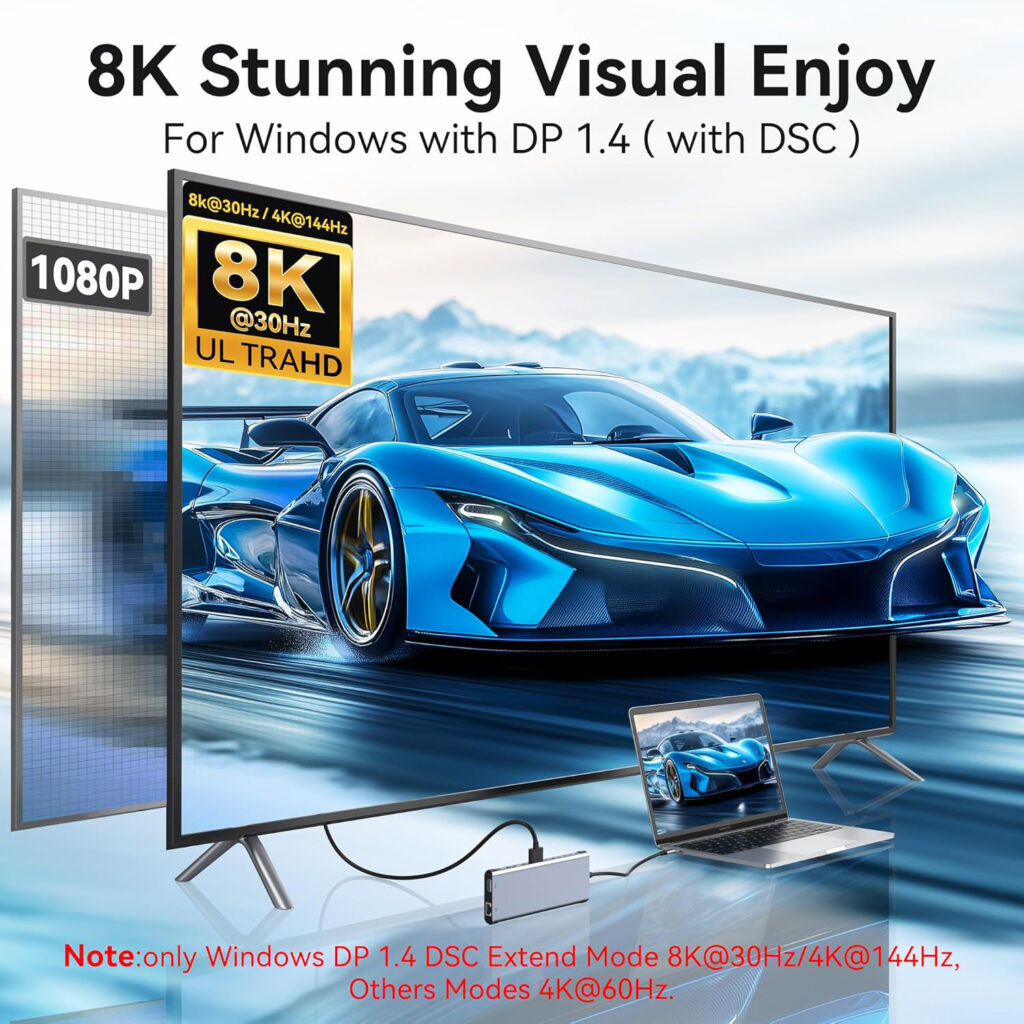The Rise of the All-in-One Powerhouse
The humble USB-C hub, once a simple solution for adding a few USB-A ports to a modern laptop, is undergoing a rapid transformation. As businesses and consumers fully embrace the USB-C standard for everything from ultrabooks and tablets to smartphones and gaming consoles, the demand for hubs has skyrocketed. However, the latest industry trends show that the market is no longer just about quantity of ports, but about intelligent power management, high-speed data transfer, and robust video support.
1. GaN Technology is Becoming Standard for Compact Power
One of the most significant shifts is the widespread adoption of Gallium Nitride (GaN) technology. Unlike traditional silicon, GaN allows for smaller, more efficient, and cooler-running power adapters. This technology is now trickling down to hubs themselves. Leading manufacturers like Anker, Satechi, and Belkin are releasing hubs with integrated GaN passthrough charging, capable of delivering 100W or more to the host laptop while simultaneously powering multiple connected devices. This means users can finally ditch their bulky laptop charger and rely on a single, sleek hub for all their power and connectivity needs.
2. The Push for Higher Video Resolutions: 4K@120Hz and 8K are on the Horizon
With the proliferation of high-refresh-rate monitors and 4K/8K displays, video output has become a critical differentiator. While 4K@60Hz is now table stakes for mid-range hubs, the new battleground is 4K at 120Hz and 8K at 30Hz, primarily driven by the latest HDMI 2.1 and DisplayPort 2.1 standards. This is a game-changer for creative professionals working with high-resolution video and gamers seeking a seamless, desktop-like experience from their laptops. Hubs featuring these specs are still premium, but their presence signals the direction of the market.
3. “Smart” Hubs with Dynamic Power Distribution
A key innovation emerging from brands like CalDigit and Plugable is intelligent power management. Modern hubs are becoming smarter, capable of dynamically allocating power based on connected devices. For example, if a user connects a power-hungry external SSD and a smartphone, the hub can prioritize the SSD for faster data transfer while providing a standard charge to the phone. This prevents overloading and ensures optimal performance for every connected peripheral, a feature highly valued in professional settings.
4. Sustainability and Build Quality Take Center Stage
As the market matures, consumers are becoming more discerning. There is a growing demand for hubs built to last, moving away from flimsy, plastic designs. Companies are responding by using higher-grade materials like aluminum alloy, which not only looks and feels premium but also aids in heat dissipation. Furthermore, environmental concerns are pushing manufacturers to incorporate recycled materials and reduce packaging waste, appealing to the eco-conscious buyer.
Market Outlook and Challenges
According to a recent report by Grand View Research, the global USB-C hub market is expected to grow at a compound annual growth rate (CAGR) of over 8% through 2030. The primary drivers are the continued removal of legacy ports from flagship devices and the hybrid work model, which demands flexible, portable workstation setups.
The main challenge remains compatibility and consumer education. With varying levels of USB-C support (USB 3.2, USB4, Thunderbolt 3/4) across different laptops, ensuring a hub works as advertised with a specific device can be confusing. Industry leaders are addressing this by making product specifications clearer and emphasizing Thunderbolt 4 certification, which guarantees a high baseline of performance and compatibility.
In summary, the USB-C hub is evolving from a simple dongle into a sophisticated central nervous system for the modern digital workspace. The focus has shifted from mere port replication to delivering a seamless, powerful, and sustainable user experience. As laptop designs continue to simplify, the intelligent, high-performance hub is no longer an accessory but an essential component of the productivity toolkit.

